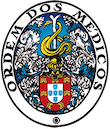Adaptation of the Standardized Patient Evaluation of Eye Dryness Questionnaire to European Portuguese (SPEED-Vp) in a Non-Clinical Sample
DOI:
https://doi.org/10.20344/amp.18557Keywords:
Dry Eye Syndromes, Language, Portugal, Psychometrics, Reproducibility of Results, Surveys and QuestionnairesAbstract
Introduction: The aim of this study was to translate and adapt the Standardized Patient Evaluation of Eye Dryness questionnaire to European Portuguese, as well as assess the psychometric performance of the translated version, including repeatability and agreement.
Material and Methods: The original Standardized Patient Evaluation of Eye Dryness - SPEED questionnaire was translated and adapted to the Portuguese cultural context by following a scientifically valid methodology commonly used in the process of adapting tools to other cultures and languages.
The questionnaire resulting from the translation into the new language was subject to a pre-test where the comments of the participants were written and considered for the final version of the questionnaire. For the scale validation of the final version of the translated questionnaire, 89 subjects from a non-clinical population, aged 18 to 84 years, were asked to answer the questionnaire (61% were women). One week later, the same questionnaire was repeated by 63 subjects. The internal reliability of the questionnaire was analyzed by Cronbach’s alpha, temporal stability by test-retest, and analysis of agreement between measures by the Bland-Altman method.
Results: The internal consistency of the translated questionnaire, SPEED-vP was high (α = 0.871) and all questionnaire items contributed to an increase in this index. This consistency was also confirmed to be high in the retest (α = 0.856) and when the sample was stratified by age and sex. The SPEED-complete questionnaire also showed high consistency (α = 0.88). The repeatability of the instrument was high (ICC 0.933; 95% CI: 0.899 and 0.960) and the Bland-Altman plot revealed good agreement between measures.
Conclusion: The Standardized Patient Evaluation of Eye Dryness in Portuguese (SPEED-vP) showed good psychometric properties for the Portuguese population. Therefore, the translated version of the SPEED-vP questionnaire could be used to quantitatively measure the presence of dry eye symptoms in the Portuguese population.
Downloads
References
Craig JP, Nichols KK, Akpek EK, Caffery B, Dua HS, Joo CK, et al. TFOS DEWS II definition and classification report. Ocul Surf. 2017;15:276-83. DOI: https://doi.org/10.1016/j.jtos.2017.05.008
Henriques J, Vaz-Pereira S, Nascimento J, Rosa P. Diabetic eye disease. Acta Med Port. 2015;28:107-13. DOI: https://doi.org/10.20344/amp.5361
Vaz F, Henriques S, Silva D, Roque J, Lopes A, Mota M. Digital asthenopia: Portuguese Group of Ergophthalmology Survey. Acta Med Port. 2019;32:260-5. DOI: https://doi.org/10.20344/amp.10942
Stapleton F, Alves M, Bunya VY, Jalbert I, Lekhanont K, Malet F, et al. TFOS DEWS II epidemiology report. Ocul Surf. 2017;15:334–65. DOI: https://doi.org/10.1016/j.jtos.2017.05.003
Wang MT, Muntz A, Mamidi B, Wolffsohn JS, Craig JP. Modifiable lifestyle risk factors for dry eye disease. Cont Lens Anterior Eye. 2021;44:101409. DOI: https://doi.org/10.1016/j.clae.2021.01.004
Hashmani N, Munaf U, Saleem A, Javed SO, Hashmani S. Comparing SPEED and OSDI questionnaires in a non-clinical sample. Clin Ophthalmol. 2021;15:4169–73.
Asiedu K, Kyei S, Mensah SN, Ocansey S, Abu LS, Kyere EA. Ocular Surface Disease Index (OSDI) versus the Standard Patient Evaluation of Eye Dryness (SPEED): a study of a nonclinical sample. Cornea. 2016;35:175–80. DOI: https://doi.org/10.1097/ICO.0000000000000712
Ngo W, Situ P, Keir N, Korb D, Blackie C, Simpson T. Psychometric properties and validation of the Standard Patient Evaluation of Eye Dryness questionnaire. Cornea. 2013;32:1204–10. DOI: https://doi.org/10.1097/ICO.0b013e318294b0c0
Kyei S, Dzasimatu SK, Asiedu K, Ayerakwah PA. Association between dry eye symptoms and signs. J Curr Ophthalmol. 2018;30:321-5. DOI: https://doi.org/10.1016/j.joco.2018.05.002
Blackie CA, Solomon JD, Scaffidi RC, Greiner JV, Lemp MA, Korb DR. The relationship between dry eye symptoms and lipid layer thickness. Cornea. 2009;28:789-94. DOI: https://doi.org/10.1097/ICO.0b013e318191b870
Wolffsohn JS, Arita R, Chalmers R, Djalilian A, Dogru M, Dumbleton K, et al. TFOS DEWS II diagnostic methodology report. Ocul Surf. 2017;15: 539–74. DOI: https://doi.org/10.1016/j.jtos.2017.05.001
Facchin A, Boccardo L. Italian translation, validation, and repeatability of Standard Patient Evaluation of Eye Dryness (SPEED) Questionnaire. Cont Lens Anterior Eye. 2021;101497. DOI: https://doi.org/10.1016/j.clae.2021.101497
Gjersing L, Caplehorn JR, Clausen T. Cross-cultural adaptation of research instruments: language, setting, time and statistical considerations. BMC Med Res Methodol. 2010;10:13. DOI: https://doi.org/10.1186/1471-2288-10-13
Wild D, Grove A, Martin M, Eremenco S, McElroy S, Verjee-Lorenz A, et al. Principles of good practice for the translation and cultural adaptation process for patient reported outcomes (PRO) measures: report of the ISPOR Task Force for Translation and Cultural Adaptation. Value Health. 2005;8:94-104. DOI: https://doi.org/10.1111/j.1524-4733.2005.04054.x
Perneger TV, Courvoisier DS, Hudelson PM, Gayet-Ageron A. Sample size for pre-tests of questionnaires. Qual Life Res. 2015;24:147-51. DOI: https://doi.org/10.1007/s11136-014-0752-2
Bujang MA, Omar ED, Baharum NA. A review on sample size determination for Cronbach’s alpha test: a simple guide for researchers. Malays J Med Sci. 2018;25:85–99. DOI: https://doi.org/10.21315/mjms2018.25.6.9
Hashmani N, Munaf U, Saleem A, Javed SO, Hashmani S. Comparing SPEED and OSDI questionnaires in a non-clinical sample. Clin Ophthalmol. 2021;15:4169. DOI: https://doi.org/10.2147/OPTH.S332565
Taber KS. The use of Cronbach’s alpha when developing and reporting research instruments in science education. Res Sci Educ. 2018;48:1273–96. DOI: https://doi.org/10.1007/s11165-016-9602-2
Haghayegh S, Kang HA, Khoshnevis S, Smolensky MH, Diller KR. A comprehensive guideline for Bland–Altman and intra class correlation calculations to properly compare two methods of measurement and interpret findings. Physiol Meas. 2020;41:055012. DOI: https://doi.org/10.1088/1361-6579/ab86d6
Myles PS, Cui JI. Using the Bland–Altman method to measure agreement with repeated measures. Br J Anaesth. 2007;99:309-11. DOI: https://doi.org/10.1093/bja/aem214
Garza-León M, Valencia-Garza M, Martínez-Leal B, Villarreal-Peña P, Marcos-Abdala HG, Cortéz-Guajardo AL, et al. Prevalence of ocular surface disease symptoms and risk factors in group of university students in Monterrey, Mexico. J Ophthalmic Inflamm Infect. 2016;6:1-7. DOI: https://doi.org/10.1186/s12348-016-0114-z
Weng HY, Ho WT, Chiu CY, Tsai TY, Chang SW. Characteristics of tear film lipid layer in young dry eye patients. J Formos Med Assoc. 2021;120:1478-84. DOI: https://doi.org/10.1016/j.jfma.2020.10.028
Barabino S. Is dry eye disease the same in young and old patients? A narrative review of the literature. BMC Ophthalmol. 2022;22:1-6. DOI: https://doi.org/10.1186/s12886-022-02269-2
Zhang Y, Chen H, Wu X. Prevalence and risk factors associated with dry eye syndrome among senior high school students in a county of Shandong Province, China. Ophthalmic Epidemiol. 2021;19:226-30. DOI: https://doi.org/10.3109/09286586.2012.670742
Downloads
Published
How to Cite
Issue
Section
License
Copyright (c) 2023 Acta Médica Portuguesa

This work is licensed under a Creative Commons Attribution-NonCommercial 4.0 International License.
All the articles published in the AMP are open access and comply with the requirements of funding agencies or academic institutions. The AMP is governed by the terms of the Creative Commons ‘Attribution – Non-Commercial Use - (CC-BY-NC)’ license, regarding the use by third parties.
It is the author’s responsibility to obtain approval for the reproduction of figures, tables, etc. from other publications.
Upon acceptance of an article for publication, the authors will be asked to complete the ICMJE “Copyright Liability and Copyright Sharing Statement “(http://www.actamedicaportuguesa.com/info/AMP-NormasPublicacao.pdf) and the “Declaration of Potential Conflicts of Interest” (http:// www.icmje.org/conflicts-of-interest). An e-mail will be sent to the corresponding author to acknowledge receipt of the manuscript.
After publication, the authors are authorised to make their articles available in repositories of their institutions of origin, as long as they always mention where they were published and according to the Creative Commons license.









